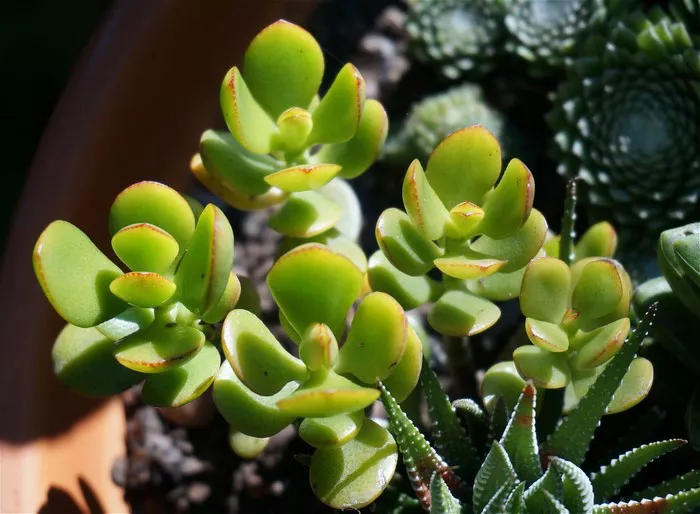Succulents have become increasingly popular among plant enthusiasts, and the Jade plant (Crassula ovata) is a timeless favorite. Known for its resilience, beauty, and symbolic significance, the Jade succulent is an excellent choice for both novice and experienced gardeners. In this comprehensive guide, we will explore the essential elements of cultivating and caring for Jade succulents, ensuring their optimal growth and longevity.
Understanding the Jade Succulent
1. Introduction to Jade Succulent (Crassula ovata)
The Jade succulent, also known as the Money Plant or Lucky Plant, hails from the Crassulaceae family. Native to South Africa, it thrives in arid conditions and has adapted well to indoor environments. Its fleshy, oval-shaped leaves and tree-like appearance make it a captivating addition to any collection.
Getting Started with Jade Succulent
2. Selecting the Right Jade Succulent
Before embarking on your Jade succulent journey, choose a healthy specimen. Look for vibrant green leaves, firm stems, and a well-established root system. Ensure there are no signs of pests or diseases, as starting with a healthy plant sets the foundation for successful cultivation.
3. Choosing the Right Container and Soil
Jade succulents thrive in well-draining soil to prevent waterlogging, which can lead to root rot. Opt for a cactus or succulent mix enriched with perlite or sand for better aeration. Select a pot with drainage holes to facilitate excess water drainage, preventing moisture-related issues.
Creating the Ideal Environment
4. Lighting Requirements for Jade Succulents
Jade succulents are sun-loving plants that thrive in bright, indirect sunlight. Provide at least 4-6 hours of sunlight per day for optimal growth. If grown indoors, place them near a south-facing window to ensure they receive adequate sunlight. Supplemental artificial lighting can be beneficial during darker months or for indoor gardening.
5. Temperature and Humidity Considerations
Jade succulents prefer warm temperatures between 65°F to 75°F (18°C to 24°C). They can tolerate slightly cooler temperatures, but it’s crucial to protect them from frost. Maintain moderate humidity levels, as excessive moisture can lead to fungal issues. Good air circulation is essential, especially in indoor environments.
Watering and Feeding
6. Watering Techniques for Jade Succulents
Proper watering is crucial for Jade succulents, as they are susceptible to root rot when overwatered. Allow the soil to dry out completely between waterings. The “soak and dry” method is effective – water the plant thoroughly, allowing excess water to drain, and then wait until the soil is dry before watering again. Adjust the frequency based on the season and environmental conditions.
7. Feeding Schedule and Fertilization Tips
Jade succulents have moderate feeding requirements. During the growing season (spring and summer), use a balanced liquid fertilizer diluted to half strength every 2-4 weeks. Avoid fertilizing during the dormant season (fall and winter) when the plant’s growth slows down.
Pruning and Propagation
8. Pruning Techniques for Shaping and Health
Pruning is essential for maintaining the shape and health of your Jade succulent. Remove dead or yellowing leaves with clean, sharp scissors or pruning shears. Pinch back the tips to encourage branching and a bushier appearance. Pruning also helps improve air circulation, reducing the risk of pests and diseases.
9. Successful Propagation Methods for Jade Succulents
Expand your Jade succulent collection through propagation. The two primary methods are leaf and stem cuttings. Carefully remove a healthy leaf or stem, allow it to dry for a day or two, and then plant it in well-draining soil. Keep the soil consistently moist until roots develop. Propagation is an exciting way to share the joy of growing Jade succulents with friends and family.
Common Issues and Troubleshooting
10. Identifying and Addressing Pests and Diseases
Even the most diligent gardener may encounter issues with pests or diseases. Learn to identify common problems such as mealybugs, aphids, or fungal infections, and take prompt action to address them. Natural remedies, insecticidal soap, or neem oil can be effective, ensuring a healthy and thriving Jade succulent.
11. Dealing with Environmental Stress Factors
Jade succulents may exhibit signs of stress due to factors like inadequate sunlight, overwatering, or extreme temperatures. Understanding these stressors and promptly addressing them is crucial to maintaining the plant’s well-being. Observing your Jade succulent regularly will help you detect and mitigate potential issues early on.
Seasonal Care and Dormancy
12. Preparing Your Jade Succulent for Winter Dormancy
As temperatures drop and daylight decreases, Jade succulents enter a period of dormancy. Adjust your care routine by reducing watering frequency and withholding fertilizer. Protect outdoor plants from frost, and consider moving potted succulents indoors to provide a more stable environment. Resume regular care as the growing season resumes in spring.
Conclusion
In conclusion, growing Jade succulents is a rewarding experience that requires attention to detail and a bit of patience. By understanding their specific needs and providing the right environment, you can enjoy the beauty and resilience of these captivating plants. Remember, each Jade succulent has its unique charm, and with proper care, your collection can flourish, bringing a touch of nature’s elegance into your home or garden.


